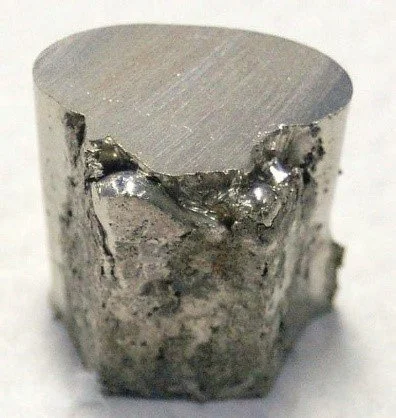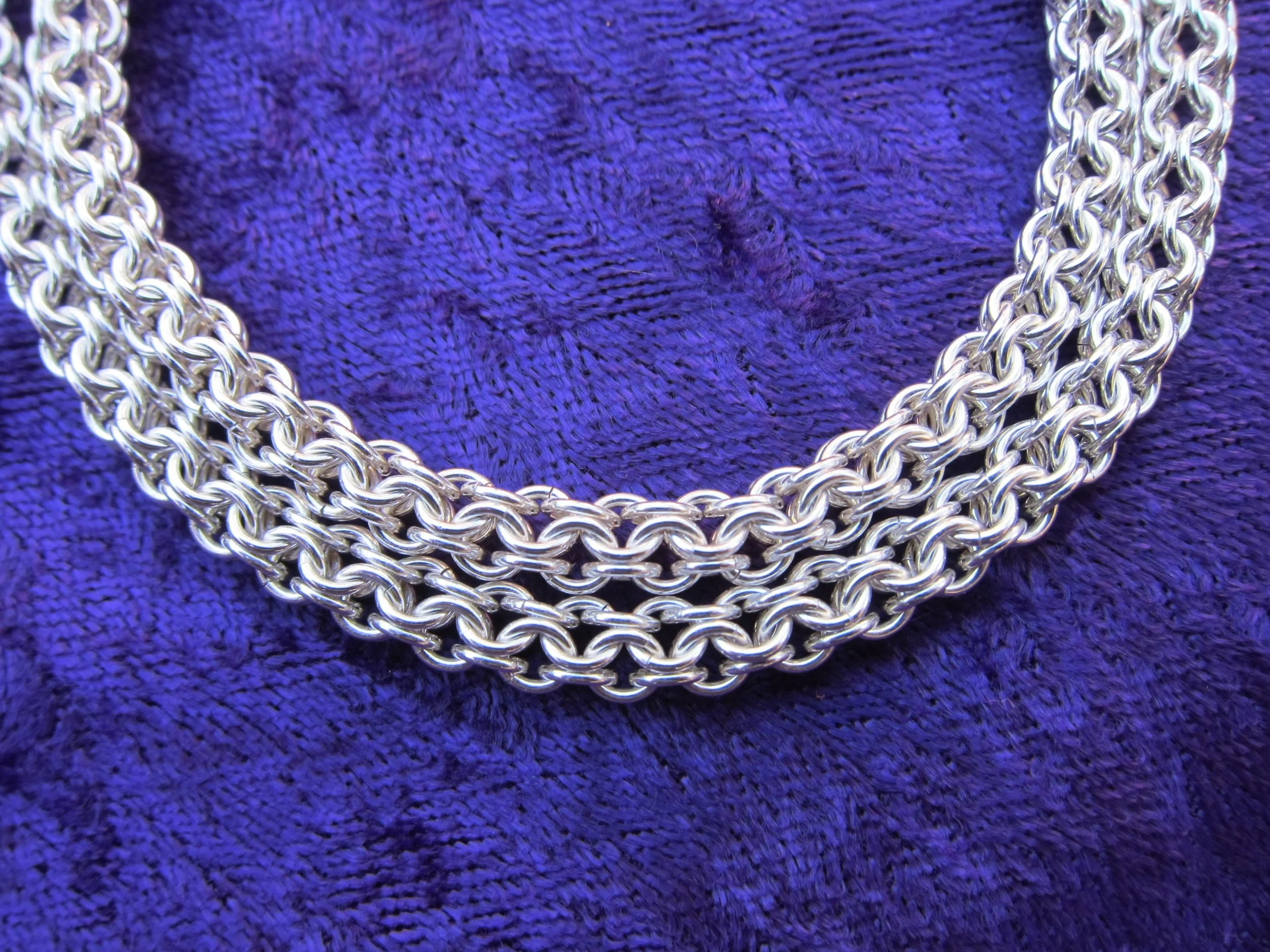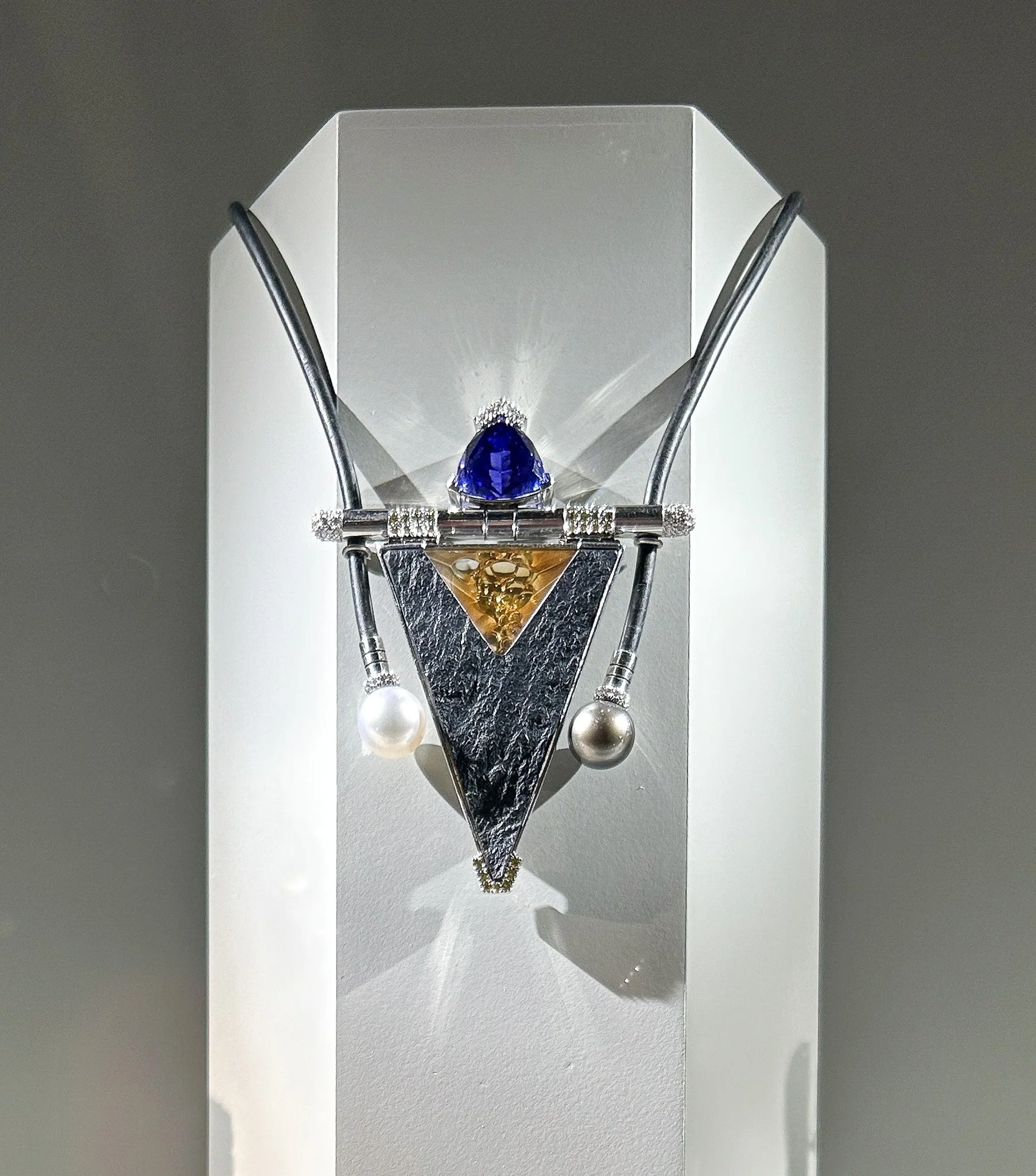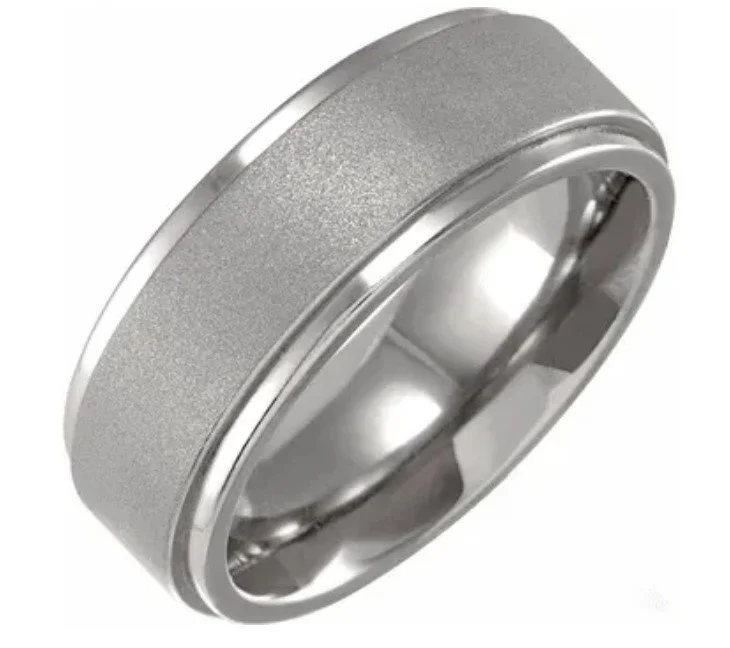Knowing How Skin Reacts To Metal Will Help You Buy That Perfect Gift!
I have many conversations with people regarding metal allergies and their jewelry choices. Although most people are aware that some jewelry can cause skin reactions, they don’t know the cause, and often chalk it up to “bad” jewelry. Or they decide they are too sensitive and can only wear gold. This lack of knowledge limits one’s ability to adequately avoid the reaction causing element, which can result in unintended overexposure. Or, just as bad, avoidance of materials one isn’t actually allergic to.
This article is intended help you understand metal allergies, avoid any triggers for your allergies, and expand your ability to purchase and enjoy jewelry. It can also help you make good choices when gifting jewelry.
Gold Nugget, Alphie Norville Gem & Mineral Museum, Tucson, AZ
What Are Metal Allergies/Sensitivities
Metal allergies are like any other type of allergic reaction - your skin cells pick up small molecules of metal, your body treats the offending substance like a foreign invader, and quickly mounts an immune response. The result is varying levels of redness, itching, swelling or a rash, with skin blistering or scaling at the site. Each time you’re re-exposed to the metal, your skin reacts in the same way. Overtime, continuous re-exposure to an allergy causing substance can cause the reaction to worsen.
Estimates of metal sensitivity in the population ranges from 3% - 30% (dependent on your source). The results range from mild but irritating symptoms (itching and redness) to extreme symptoms (rash, blistering, open sores). In either case, it’s not the ideal end result of wearing a new piece of jewelry!
You can develop an allergy to any metal, but nickel is the most common offender (Mayo & Cleveland Clinics). Many sources estimate that 1/3 of the population has some degree of nickel sensitivity. Cobalt or chromates can also be common irritants. Most metal used in jewelry is an alloy of several metals. Understanding the common ingredients in alloys can help you make better jewelry choices and prevent the allergic symptoms.
NICKEL
Cut raw Nickel specimen ~3cm.
From Material scientist at English Wikapedia
Allergies to nickel affect millions of the people in the U.S. and around the world, estimated to be as high as 1/3 the population. It is often associated with earrings and other jewelry, but can be caused many everyday items, such as coins, zippers, cellphones and eyeglass frames. This is an exposure allergy, meaning it is that is acquired after we are born, and is dependent on how often one is exposed to nickel.
Sweat from your body leaches nickel from many types of metal, especially some grades of stainless steel. These molecules are then absorbed by the skin. Through repeated exposure, you may become allergic to it. So, you may not have been nickel sensitive in your youth but are later in life. Tissue fluids are even more likely to dissolve nickel than your skin. This means that the open wound around new piercings can result in a more serious reaction than a ring might deliver.
As with all allergies, nickel allergy develops when your immune system views nickel as a harmful, rather than harmless substance. Once your body has developed a reaction to nickel your immune system will always be sensitive to it. Unfortunately, body piercings offer a direct route for exposure, so the more piercings you get, the more likely it is you’ll develop a sensitivity. Anything that breaches the skin or is internal — such as a piercing or a hip or knee replacement — creates a greater nickel concentration, and your body’s immune system will react more severely.
Common items that may expose you to nickel include:
Jewelry using nickel as part of the metal alloy
Watchbands
Clothing fasteners, such as zippers, snaps and bra hooks
Belt buckles
Eyeglass frames
Coins
Metal tools
Cellphones
Keys
Military "dog-tag" ID
Chalk
Medical devices
Laptops or computer tablets
E-cigarettes
We’ll elaborate more on this below, in the discussion of gold & silver alloys.
BRASS & COPPER
Jeweler’s brass jump rings
Brass is an alloy of copper and zinc but may also include other metals. It is often used in lower priced jewelry as a base metal, which is coated with either sterling silver or gold to make “plated” jewelry. A lot of costume or fashion jewelry is created using this as a base metal, including well known designers like Kendra Scott and Kate Spade. People often observe a green tinge develop on their skin at the site of the jewelry and believe this is an allergic reaction. If they are unaware that it is plated, they may ascribe the reaction to “bad” jewelry or an allergic reaction to lower karat gold.
Interestingly, the reaction is not usually caused by the brass itself, but by one of the components in the alloy. Typically, it is the copper component which causes the green color.
I’ve included brass in this discussion because this greening is often referred to as an “allergy” when it is not. When copper is exposed to air, human sweat, lotions, soaps, or makeup, it tends to undergo a chemical reaction called oxidation. With copper, that reaction results in a surface patina that is a shade of green. As it rubs against the skin, that oxidized layer gets transferred onto your skin. The reaction varies by individual according to each person’s body chemistry. Some people don’t experience discoloration at all. The patina on your skin is not harmful and can easily be taken off with soap & water. The same reaction happens when one wears copper jewelry.
WHAT’S THE SOLUTION – ONLY WEAR GOLD?
Many people who have experienced metal sensitivity tell me “I can only wear gold”. I have also encountered those who tell me they cannot wear gold because they are allergic to it. Both extremes can exist, but most likely the person has many more options than they have been led to believe. Allergies to gold are so rare that the specific medical tests used to identify it are generally not done until all other allergens have been eliminated.
Many people consider “gold” to be a “safe” metal. An allergic reaction to pure gold (24k) is exceedingly rare. Unfortunately, jewelry cannot be made from pure gold – it’s simply too soft to be durable. Any other “K” mark indicates that the gold is an alloy, made up of several of metals. The lower the number, the more of the “other” metals are included in the alloy. On the other hand, the lower the number, the stronger the gold is, and the less expensive it is.
Pure gold nugget from Australia, Field Museum of Natural History, Chicago, Illinois, USA (Jacopo Werther)
Every manufacturer has their own specific recipe for their gold alloys, but yellow gold typical consist of: Gold, Silver, Copper, and Zinc. The higher the karat weight, the greater the gold proportion and the less of zinc and copper. This is why most people find the higher karat weight yellow gold a safe option.
White gold on the other hand is not necessarily “safe” for those with metal sensitivities. The typical alloy could include Gold, Platinum, Palladium, Nickel, and Zinc. Gold in its natural form is yellow in color. To make it white, manufacturers must alloy it with metals with a white color.
White gold, rhodium plated, engagement and wedding rings, Kay Jewelers
Most people initially don’t notice any sensitivity to their white gold pieces. This is because white gold is almost always plated with rhodium – a bright white metal to give it a desirable color & shine. However, once the plating wears down, sensitivity can occur. In the past, nickel made up a significant portion of the white gold alloy. Due to the high number of people with nickel sensitivity, nickel free white gold is more widely available. Today, it more often contains platinum or palladium.
Nickel in can be leached by the chlorine in hot tubs and pools. If you spend much time in either of these, then any white-gold prongs containing nickel may need to be repaired more frequently compared to than those containing only palladium. It is one reason to consider pairing platinum heads/prongs in white gold engagement rings.
Rose gold is increasingly popular in jewelry. This is one of the colors of gold in which you, as a consumer, can easily see that different manufacturers use different recipes. A typical alloy includes: Gold, Copper, and Silver. The copper lends a rose, pink, or red hue to the metal depending on the proportions of copper and silver included. Some manufacturers use much more copper, resulting in darker reddish metal. As copper is rare as an allergen, rose gold is less likely to cause a reaction than white gold.
Rose gold jewelry, from a variety of manufacturers, author's own.
Although yellow, white, and rose are the most common colors of gold, many other colors are also possible. Their alloy compositions tend to have fewer allergy causing components.
Gray-White Gold: Gold, Iron, Copper
Green Gold: Gold, Silver, Copper, Cadmium
Blue-White or Blue Gold: Gold, Iron
Purple Gold: Gold, Aluminum
Other Solutions
Many metals other than gold are used in jewelry. Some you are already aware of, and some you may not be. Below is a quick overview of each.
SILVER
Silver is a common metal in jewelry. It is generally in one of three forms – fine silver (99.9% pure), sterling silver (92.5% pure + copper), and Argentium silver (~92.5% + copper + germanium). Fine silver is a pure metal, and as such is unlikely to cause an allergic reaction. However, it is soft, making it useful only in jewelry items that don’t get hit against objects (earrings vs rings).
Necklace made of fine silver, Artisan Jewelry Creations. The intricate weave of this chain allows normal stresses (pulling, yanking) to be distributed across the chain. This allows the jeweler to use fine silver, despite it’s inherently softer nature.
Sterling silver is the most common form. It is usually alloyed with copper but can be alloyed with nickel. The former is safer to use, while the latter can cause a reaction. Silver with nickel was more prevalent in the past. It is still available in some parts of the world.
Argentium is a special alloy similar to sterling in its purity, but has germanium added to it. This causes the Argentium silver to withstand tarnishing for significantly longer (years) as well as not causing allergic reactions. The unfortunate tradeoff is that Argentium is more expensive than sterling silver.
OTHER “SILVERS”
Antiques and artisan crafted items can be found around the world that range from 999 (99%, fine silver) to 800 (80% silver). Different countries have adopted different standards through time so it is wise to not assume a “silver” item is Sterling Silver. Check for the quality/purity marking. “Sterling silver” is always 92.5% silver, with a purity mark of 925.
That said, one additional wrinkle involves the US Federal Trade Commission (FTC). In the US, artisans can only apply purity marks if their makers mark is registered with the federal government. This is a substantial commitment, so many small-scale artisans, such as myself, do not apply purity marks on their pieces. Each country has its own regulations, which differ from those in the US.
Britannia Silver (95.833% silver, the rest being copper) was introduced in England in 1697 as the United Kingdom's purity standard for wrought silver items, like silverware. A silver shortage at the end of the seventeenth century resulted in people clipping the edges of silver coins already in circulation and melting them down to create silver objects. To put an end to coin clipping, parliament passed a law that raised the legal standard of wrought silver items up to 95.84%. This meant that coin silver was no longer of sufficient purity to be used in these objects. The Britannia standard lasted from 1697 and 1720, when the sterling silver standard was restored. Britannia was left as an optional higher standard. In the UK, metal fineness marks are placed on jewelry by the Assay Office, not the artisan, as part of a suite of marks that make up a Full UK Hallmark (1973 Hallmarking Act).
Nickel Silver, also known as German silver, paktong, new silver and alpacca (or alpaca) has no silver in it at all. Rather, it is an alloy containing copper, nickel, and sometimes zinc. Nickel silver first became popular as a base metal for silver-plated cutlery and other silverware. It is commonly used in coinage, musical instruments, zippers, keys, costume jewelry, and pocketknife bolsters. Some native American metalsmiths use German silver for a wide range of jewelry items. It is tough and durable with a bright white color and is less expensive than silver. Anyone with a nickel allergy should avoid this metal.
Nickel Silver jewelry components from Amazon
PLATINUM
Platinum is denser than gold resulting in rings that feel heavier on the finger, which is part of its appeal. Platinum is a strong and durable metal that doesn’t need to be mixed with other alloys to strengthen it. That said, it is often alloyed with iridium, rhodium, ruthenium, palladium, or cobalt. These alloys can raise or lower the melting temperature, make the metal whiter or greyer, increase fluidity, and reduce the density. By altering these characteristics, the different alloys become better suited for different modes of manufacturing jewelry. It should be noted however that Cobalt can cause allergic reactions in some people. Item made of platinum-cobalt alloys also have a tendency to become magnetic.
In any alloy, to carry a platinum mark, the alloy must be at least 95% pure platinum. Since 2015, pure platinum has been less expensive than pure gold. In the past that was not the case, and people still tend to think of it as being more expensive. Items made from Platinum do require extra expertise and specialized tools, which does add to the cost.
Eclipse Bolo Tie (platinum, black jade, tanzanite, pearl, diamonds, citrine), AGTA Spectrum Award, Alfie Norville Gem & Mineral Museum, Tucson, AZ, Loaned by Mark Schneider
ALUMINUM
Many people are unaware that aluminum can be used for jewelry. Allergic reactions to this metal are rare. It is less dense and therefore less weighty than other metals, which can be a positive for use in large necklaces or earrings, where too much weight can cause problems.
Aluminum can be (and often is) anodize into a rainbow choice of colors including silver, black, blue, red, green, orange, purple, yellow, and gold. When purchased from reputable manufacturers, the anodizing process results in a coating that is FDA food grade quality, long-wearing, and robustly resistant to oxidation. Because it is less well known, it also tends to be less expensive than the other metals. The finished product is beautiful, durable, hypoallergenic, and will not tarnish. Several of my clients consider it their new favorite!
TUNGSTEN
Tungsten has become a popular choice for designer jewelry, especially men’s wedding bands. Tungsten is a metallic element extracted from wolframite or scheelite ores and has the highest melting point of all metals. Like platinum, tungsten is a heavy metal, which often appeals to men. Tungsten jewelry is usually made with tungsten-carbide or tungsten-nickel alloys, with the latter being more likely to cause an allergic reaction. By itself, tungsten doesn’t usually cause allergic reactions.
Men's Tungsten Wedding Band with textured inlay, available on request
It is a hard metal, but brittle under certain conditions. Rings will break or shatter under pressure rather than bend or warp. Tungsten is extremely difficult to add traditional gemstone settings to, but many designers create interesting inlays. Manufacturing jewelry with this metal is only done in a non-oxygen environment and extremely high temperatures, so only specialized jewelers will accept tungsten jewelry for repairs or modifications. The cost of tungsten jewelry is low enough that retail jewelers simply replace a piece rather than repair it.
TITANIUM
Because of its durability, titanium is also popular for designer jewelry, particularly men’s rings. It is an inert metal, making it a good choice for those with allergies. It is considered a biocompatible metal. Because of this, titanium is commonly used for surgical implants and dental fittings. Platinum is the only other jewelry metal that is highly biocompatible. Titanium is the only known "foreign" material that living tissue will attach onto.
Men's Titanium Wedding Band, available on request
Titanium's durability, light weight, and corrosion resistance also make it useful for watch cases (such as Citizen). It can be anodized to variety of bright colors, which, along with its chemical inertness, makes it a popular metal for body piercings. It resists corrosion, rust, scratching, and bending, but is also very lightweight.
STAINLESS STEEL
It is common to see stainless steel referred to as hypoallergenic, and for the most part it is. However, some stainless steel does contain nickel, which would impact those with a strong sensitivity to nickel. Surgical grade or nickel free stainless steel are the best options for those with nickel sensitivity. Stainless is a strong, scratch resistant material so is often made into men’s jewelry (chains and bracelets) and is a common material for watches. It also withstands corrosion and tarnishing exceptionally well. Coloring of stainless steel is done by an ion plating process. The process uses opposite electrical charges to force the coating and substrate material to bond. This can result in finishes that are highly polished or matte and is significantly more durable than traditional plating methods. But, over time, it will eventually wear off.
Men’s stainless steel necklace, Artisan Jewelry Creations
SUMMARY
A variety of metal choices exist in the jewelry industry, an important consideration particularly for those who are sensitive to certain metals. Nickel is by far the most common metal allergy amongst the population and is the metal causing the majority of skin reactions. It has been a frequent component in many different metal alloys, resulting in people believing they are allergic to metals that they are not allergic to. Allergies to other metals do occur but are considered rare. Gold is often considered “safe” but, when alloyed with other metals, specific pieces may not be. There are several alternatives to gold that are hypoallergenic. These metals also have other qualities that make them excellent choices for jewelry. Contrary to widespread belief, the green skin phenomenon is not an allergic reaction, but an oxidation process that produces a green patina in metals containing copper.
* The material in this article has been compiled from many different sources including the Mayo Clinic, Cleveland Clinic, and other health sites. I am not a medical professional. This article is for informational purposes only. If you believe you have a serious metal allergy, please consult your doctor.
REFERENCES
https://theassayoffice.com/platinum_alloys
https://www.ganoksin.com/article/platinum-alloy-applications-for-jewelry/
https://www.assayofficelondon.co.uk/faqs
National Stamping Act - https://www.govinfo.gov/content/pkg/USCODE-2009-title15/html/USCODE-2009-title15-chap8.htm
https://www.bullionbypost.co.uk/index/gold/gold-alloys/
https://www.totalmateria.com/page.aspx?ID=CheckArticle&site=ktn&NM=230











